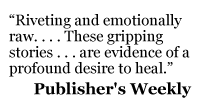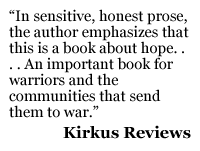Originally published in USA Today, February 24, 2014

Military personnel salute the casket of former Navy SEAL Chris Kyle in Austin on Feb. 12. Kyle, author of “American Sniper,” and a friend were killed at a shooting range. Police have arrested Eddie Ray Routh, a veteran of the Iraq War.
(Photo: Deborah Cannon, AP)
Blaming suspect’s actions in sniper’s death on disorder unfairly stigmatizes others.
Eddie Ray Routh, an Iraq War veteran who has been charged in the killings of former Navy SEAL sniper Chris Kyle and another man at a Texas gun range, is widely reported to suffer from post-traumatic stress disorder.
Routh was placed in mental hospitals twice in the past five months, according to police records, the first for threatening to kill his family and himself and the second because someone called authorities fearful for Routh’s own safety.
While these details paint a picture of a very troubled young man — he is undergoing a psychiatric examination to determine his competency to stand trial — inferences that PTSD somehow explains Routh’s alleged actions risk making this kind of murderous violence synonymous with the condition and further stigmatizing those affected by it.
Though our knowledge of combat-related PTSD is growing, it’s still a misunderstood condition. There are disagreements among mental health experts on both the number of troops affected (estimates as low as 4.3% to as high as 20%) and even the primary cause of the condition.
The clinical definition of PTSD cites witnessing a traumatic event as the initiating factor. However, a 2009 study by the Department of Veterans Affairs posits the concept of “moral injury,” that guilt about killing or not being killed in war might truly be the instigator. Studies also show that people with PTSD can manifest the condition in many ways, both in symptoms and severity. Some might be mildly affected, while others can become incapacitated. Insomnia, depression, detachment, guilt, distrust, hypervigilance and aggression can all be symptoms of PTSD.
Though that aggression might be directed outward, too often it’s focused inward. This could help explain the alarming increases in military suicides, which outpaced combat deaths in 2012.
If we scratch below the surface of Routh’s tragic story, we may begin to see some instructive truths emerge. Though it might seem that Routh, 25, and Kyle, 38, were very different kinds of warriors, clinical experts believe both suffered from PTSD.
In his best-selling book American Sniper, which recounted his 150 confirmed kills, Kyle wrote that he struggled after his service, even going on prescription medications to help manage his post-war stress. Even so, Kyle lived a productive life, writing books, starting a business and a foundation to help others grappling with PTSD. By contrast, Routh did not seem to be coping at all. The fact that both men were affected by PTSD shows the breadth and variance of the condition.
Comprehensive solutions might be a ways off, but in the meantime we must not default to a narrative of fear in which a veteran with PTSD equals a ticking time bomb. When appropriate, we should honor the tradition of storytelling where warriors can share both the details and the burdens of what they did or didn’t do in war. That way, we can help them get the specific treatment appropriate to their condition. As the soldier carried the burden of war, we as a society must now carry the soldier.
Kevin Sites, a veteran war correspondent, is the author of The Things They Cannot Say: Stories Soldiers Won’t Tell You About What They’ve Seen, Done or Failed to Do in War.
In addition to its own editorials, USA TODAY publishes diverse opinions from outside writers, including our Board of Contributors.
(Photo: Deborah Cannon, AP)










